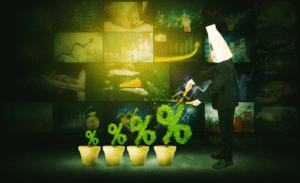Shades of Blue: The Definitive Guide

Shades of blue
When it comes to choosing a palette for design projects, few options offer the versatility and impact of shades of blue. This color family, with its extensive range of tones, evokes emotions from calm to confidence, making it essential in everything from web design to interior decor. Understanding blue’s various hex codes ensures consistency in digital design, allowing a project to shine with precise hues.
The Power of Blue in Design
Blue, as a color, is frequently associated with stability, trust, and serenity. From corporate branding to artistic expression, the psychological impact of using the right shades of blue cannot be overstated. Moreover, incorporating specific shades offers a chance to evoke particular moods or reinforce brand messaging.
Classic Blue (#0F4C81)
Named Pantone’s Color of the Year in 2020, Classic Blue is reminiscent of a twilight sky. It symbolizes calm, reliability, and connection. This timeless shade is widely used in branding due to its universally appealing nature.
Sky Blue (#87CEEB)
Lighter and airier, Sky Blue exudes freedom and optimism. Often seen in nature, this color provides a fresh and playful tone, ideal for uplifting digital or print designs.
Hex Color System and Its Importance
For designers, a hex code offers a convenient way to specify precise colors. Unlike vague color descriptions, the hex system allows for accurate replication across different platforms, ensuring consistent visual experiences.
How to Use Hex Colors in Web Design
- Consistency: Hex codes ensure that color remains consistent across various devices and screens.
- Precision: Rather than approximating a “dark blue,” a specific hex code like #1D2951 can be provided for exact shade matching.
- Customization: With so many shades available, hex colors allow limitless creative possibilities when used correctly.
Shades of Blue Hex Color Palette
A palette featuring various shades of blue can create dynamic, harmonious designs. Here are some popular hex codes:
- Navy Blue (#000080): Deep and sophisticated, it connotes elegance and professionalism.
- Royal Blue (#4169E1): Bold and attention-grabbing, perfect for calls to action.
- Azure (#007FFF): Vivid and energetic, reflecting modernity and brightness.
- Baby Blue (#89CFF0): Gentle and soothing, ideal for healthcare branding.
- Teal Blue (#008080): With green undertones, it offers an earthy yet refreshing vibe.
Symbolism Behind Different Shades of Blue
Each shade carries distinct connotations. By understanding their meanings, designers can wield shades of blue effectively in projects.
Dark Blues
These are associated with professionalism, intelligence, and power. Navy and other dark tones often appear in corporate logos due to their serious and trustworthy appearance.
Light Blues
Colors like Sky Blue and Baby Blue evoke calmness, freshness, and openness. They are often used in wellness-related design to promote relaxation.
Combining Shades of Blue Hex Color for Stunning Effects
Designers can maximize the impact of shades of blue by creating harmonious or contrasting combinations. Here are some suggestions:
Monochromatic Schemes
Sticking to a single color family but varying the shades creates a sleek, sophisticated design. For example:
- Dark Blue (#00008B), Medium Blue (#0000CD), and Light Blue (#ADD8E6) together result in a calming, fluid transition.
Complementary Schemes
Pairing shades of blue with their opposite color wheel provides a striking contrast. Blue’s complementary color is orange, creating bold visual interest.
- Try pairing Classic Blue (#0F4C81) with Burnt Orange (#CC5500) for a warm yet balanced look.
Triadic Schemes
Using three evenly spaced colors on the wheel creates vibrant combinations. Consider:
- Teal (#008080), Dark Magenta (#8B008B), and Sunflower Yellow (#FFDA03).
Creating Emotional Impact with Shades of Blue
Selecting the right shades can make or break user engagement. By tapping into psychological associations, shades of blue elevate the user experience.
Inspiring Calm and Focus
Using light blues in environments or digital platforms can reduce anxiety and promote focus. This principle is often applied in educational settings and wellness apps.
Building Trust in Branding
Darker blues convey reliability and stability. Companies often choose this tone to build customer trust and convey professionalism.
Practical Uses of Blue in Everyday Design
Incorporating shades of blue hex colors into diverse design contexts—from websites to fashion and home decor—offers designers numerous ways to inspire and delight.
Web Design
Using blue for website backgrounds or CTA buttons grabs attention without overwhelming the user.
Interior Design
Blue accents create relaxing spaces. From navy walls to turquoise furnishings, there’s a shade suitable for any room.
Accessibility and Readability Considerations
Accessibility remains crucial. Proper contrast between text and background colors ensures readability for all users. When using shades of blue, be mindful of color contrasts for accessible design.
Tools for Contrast Checking
Tools like the WebAIM contrast checker help designers maintain compliance and readability standards.
The Role of Blue in Pop Culture and Fashion
Blue has left a lasting impact on pop culture and fashion. Denim, a global staple, epitomizes blue’s versatility, while the “little blue dress” offers a twist on the classic fashion statement.
From Film to Digital Media
Blue hues often set the mood in films, ranging from ominous dark blues to uplifting light blues.
Design Tips for Choosing Blue Hex Shades
- Match Purpose with Emotion: Choose lighter blues for a calming effect or darker blues for authority.
- Consider Audience: Cultural preferences influence color perception. Some cultures view blue as sacred; others as melancholy.
- Experiment with Gradients: Blend blue tones to create depth and interest.
Frequently Asked Questions
What is the best use of shades of blue hex color?
Blue is widely used in web design, branding, and home decor due to its calming and professional connotations.
How do hex codes work?
Hex codes specify colors using a six-character alphanumeric code representing red, green, and blue values.
Can blue hex shades evoke emotions?
Yes, darker shades can convey professionalism, while lighter ones promote calm and relaxation.
What tools help in picking shades of blue hex color?
Tools like Adobe Color, Coolors, and the WebAIM contrast checker aid designers in choosing the perfect shades.
Which industries commonly use blue?
Blue is favored in technology, finance, healthcare, and corporate branding due to its trustworthy and calming nature.
What is the hex code for navy blue?
The hex code for navy blue is #000080.
How to combine blue shades in design?
Consider complementary colors, monochromatic schemes, or contrast levels to create balance and interest.







